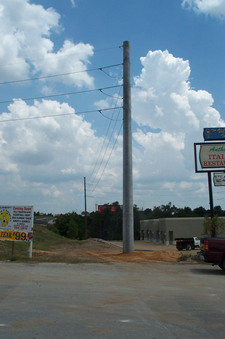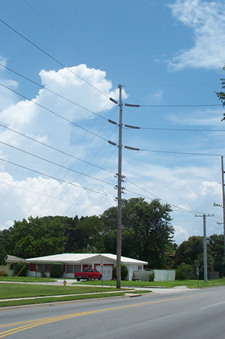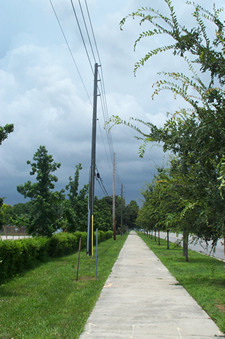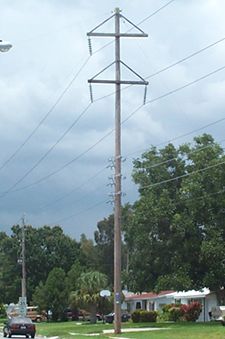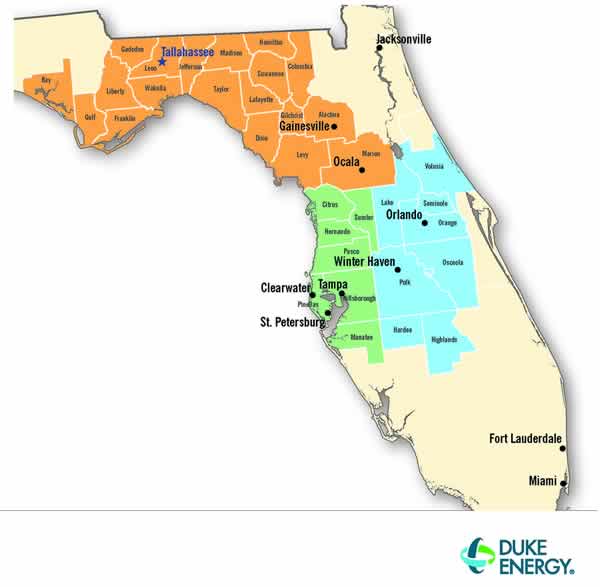Duke Energy
General Information
And Frequently Asked Questions
Duke Energy and Progress Energy have merged to create the new Duke Energy, the nation’s largest utility. Our combined assets and expertise will help us achieve more efficiency to deliver affordable, reliable and clean energy to approximately 7 million customers, both today and in the future.
Duke Energy is committed to providing safe, reliable power to our customers. We have an obligation to ensure that our transmission system complies with federally mandated criteria. This includes the maintenance of transmission rights of way, the strip of land Duke Energy purchases from property owners to install the lines and equipment necessary to deliver electricity. Duke Energy owns and operates an extensive network of more than 36,000 miles of high-voltage power lines, called electric transmission lines. These power lines help ensure a continuous, reliable flow of electricity from generating stations to our customers and neighboring utilities. This includes our electric distribution lines which can be installed above ground or underground and carry the lower voltages of electricity to neighborhoods and businesses. For more information about our company, please visit www.duke-energy.com.
The map below shows the counties located within Duke Energy Florida's overall Service Territory.
Frequently Asked Questions
What is a right of way?
A right of way is land, property or interest therein, usually in a strip, acquired for infrastructure such as a highway, rail bed, pipeline, water or sewer lines, electric power lines or telephone facilities. The land has been set aside for use by an easement or in fee simple ownership, either by negotiation or condemnation.
What is an easement?
An easement is the acquired right to use the land of another for a designated purpose. In cases where Duke Energy holds an easement, Duke Energy has purchased specific rights from an underlying property owner, typically to construct, operate and maintain electric transmission and distribution lines, and other rights necessary or convenient to the exercise of those specific rights. The underlying property owner may make any use of that land that does not unduly interfere with Duke Energy's use of the easement. Most uses may be permitted with Duke Energy's written permission, unless those uses impair Duke Energy's ability to use the right of way according to the easement rights granted.
What is an encroachment?
An encroachment is any infringement on the property or authority of another. Any use of a Duke Energy transmission easement is an encroachment. The purpose of our Transmission Right of Way Use Guidelines is to insure that all encroachments are compatible with the rights granted to Duke Energy in the easement. However, approval of your application does not guarantee the requested use to be completely compatible with the safe and efficient operation and maintenance of Duke Energy's existing and future high voltage electrical lines.
Impermissible encroachments pose a potential conflict with Duke Energy's safe and efficient operation of its facilities and are subject to action by Duke Energy.
What is fee ownership?
Fee simple ownership is the most common form of land ownership. Fee ownership means one holds title to and has all the rights and privileges associated with land ownership. The holder of a title in fee simple has full possessory rights over the land, subject to any easements of record.
Where can I find my property's tax identification number and an aerial of my property?
Your local county Property Appraiser's office can provide you with this information. Your property's tax identification (ID) number (also known as folio number, Parcel ID Number, PIN or Altkey Number) may also be listed on your deed of conveyance or property tax receipt. Other sites available for aerials are http://www.bing.com/maps/ or https://maps.google.com/.
Where can I obtain an aerial?
Your local county Property Appraiser's office will have aerials available online or for purchase for a nominal fee. Please visit Links to Related Sites on our main page to find a link to your local Property Appraiser. Aerials are also available at terraserver.homeadvisor.msn.com.
How do I Identify Distribution and Transmission Structures?
Transmission structures are typically made of wood, concrete or steel and are 60’ in height or greater. They can be in the form of a single pole (round or square), H-Frame (a two pole structure connected by cross-arms) or metal lattice tower. These structures carry the high voltage lines that can be followed for miles, from one electric substation to another, in rights-of-way made up of easements and/or land owned by Duke Energy. Transmission easements can have a width from 25’ up to 295’ or greater. A transmission structure will typically have an identifier on the pole in the form of letters and numbers, for example ANL-43. These will be located at either eye level or at the top of the pole. This is the line code and structure number and will be helpful information when making an inquiry.
Distribution structures are typically made of wood or concrete (square) and are 30’ to 40’ tall. Distribution poles are typically the smaller poles seen following roads or property lines through subdivisions and have connections directly to homes or businesses. Distribution easements are generally 25' wide or less and will usually state in the heading that it is a distribution easement. A distribution pole will typically have a metal plate with a letter and numbers. This information as well as an address will be helpful information when making an inquiry.
|
Steel Transmission Tower |
|
|
Concrete Transmission Deadend |
Wood Transmission Deadend |
|
|
Wood Distribution Pole |
Transmission with Distribution Underbuild |
Where do I find Duke Energy structure numbers?
All Duke Energy transmission structure numbers are located on the pole or on one of the legs of the towers. The numbers are usually located chest high or at the top of the pole and have a letter and number designation. For example: ANL-67.
Is there a fee to submit my application for a Relocation or a Release of Easement?
Yes, these fees are charged to cover research time and administrative costs. These fees must be submitted with the application to Relocate Transmission Structures or to request the Release of a Transmission easement. Checks are made payable to Duke Energy Florida, LLC.
|

